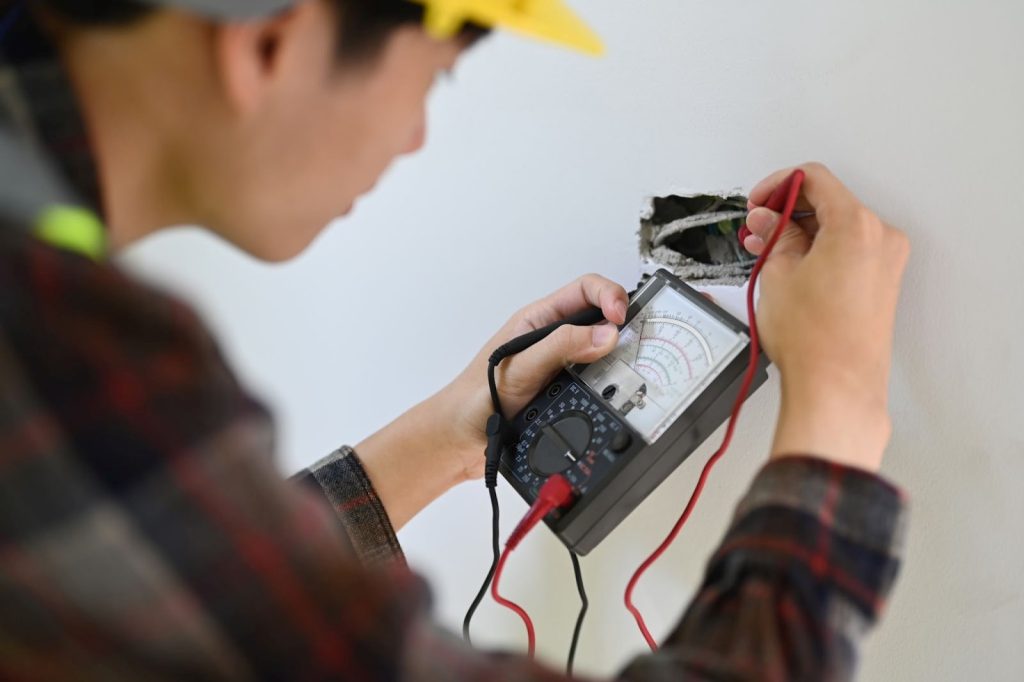The risk of electricity is one of the most dangerous aspects of many industries, workplaces, and homes. Yet, the importance of electrical safety is often underestimated. Numerous avoidable mishaps, such as fires, have occurred as a result of electrical problems.
Electrical accidents can occur when operating devices at any voltage, but the danger of serious harm augments as the voltage rises. Electrical shocks, burns, loss of muscular control, and thermal burns are all consequences of electrical neglect.
Electricity poses a considerable risk to everyone who owns any electrical equipment that might be faulty or appliances with inadequate electrical installation. For instance, charging your phone with a defective charging cube has incendiary potential. Simple precautionary steps should be enough to limit these hazards, but they are frequently overlooked by employers and homeowners.
What is PAT testing?
Portable appliance testing or PAT testing is a routine examination of electrical appliances to ensure that they are safe to use. The goal of the test is to keep people safe from electrical hazards.
A complete PAT test should include a visual inspection as well as a more thorough examination using specialised PAT testing equipment. Lead polarity, earth continuity, and insulation resistance are all analyzed during this test.
Every item should be labelled ‘passed’ or ‘failed’ at the completion of a PAT test, and the results should be documented. The current regulation does not define ‘portable appliance’, although the common interpretation is “any device that has a plug and plugs into a power socket.”
As a result, the term “portable” can be misleading. There are seven types of appliances that should be subjected to PAT testing or at the very least, visual inspections:
- Fixed appliances
- Stationary appliances
- IT appliances
- Moveable appliances
- Portable appliances
- Cables and chargers
- Hand-held appliances
Is electrical testing a legal requirement?
Electrical testing is not a legal requirement or obligation. Nonetheless, current UK legislation mandates that firms keep their electrical appliances in good working order and in a safe form. Businesses also have a legal obligation to protect their employees and the general public.
PAT testing has become a regular method of ensuring that this legal requirement is met since it is one of the most effective ways of doing so, particularly for high-risk or complex settings. Specific guidelines on the use of electrical equipment at work can be found in various pieces of legislation:
- The Health & Safety at Work Act
- The Electricity at Work Regulations
- The Provision and Use of Work Equipment Regulations
- The Management of Health & Safety at Work Regulations
What are the penalties if the legal requirement is not met?
The punishment for failing to comply with legislative responsibilities for electrical appliance safety can range from 2 years in prison to an unlimited monetary penalty. The penalty will largely depend on the severity of the situation.
How long does it take to PAT test an item?
Most PAT testing services conduct approximately 30 tests in one hour. This typically includes plugging the appliance into the PAT tester, receiving a pass or fail, and placing a red fail or green pass sticker on the electrical appliance.
Several factors can influence how long a PAT test takes, including ease of access to the electrical appliances, and whether it is possible to unplug and not use the appliance.
Why PAT testing is important
Electrical equipment testing, or PAT testing is important in the UK due to the use of low-cost appliances from all over the world. The majority of these devices are typically of poor quality and need to be thoroughly checked before being used in a household or at work.
There have been fires and electrical shocks in the past as a result of equipment that was poorly constructed and did not meet safety regulations. Not only are these tests required for new appliances, but also on existing appliances to ensure that they meet a minimum health and safety standard.
In most cases, qualified PAT testers and electricians conduct the inspection, which is done with calibrated tools. When the objects pass the test, a label with a pass or fail is attached to the device.
The rationale for regular testing is based on the notion that over half of all the accidental fires in residences occur because of faulty electrical equipment. This is an incredible number of fires linked to one single source, which can easily be reduced through regular testing.
How long does a PAT test certificate last?
A PAT test certificate is valid until the appliance is no longer safe to use, or until the risk assessment period has expired.
The assurance that your appliance is safe is valid for as long as it takes to apply the label, plug it in, and wait for it to be damaged. The certificate’s validity is also largely contingent on this. Some argue that the certificate is only valid until the test is completed, which would be rather pointless.
The level of precaution taken should be reasonable to the risk. With this in mind, PAT testing frequency is determined by three primary factors:
- The risk level of the working environment
- The electrical class of the appliance
- The category of the appliance
The Health and Safety Executive further advises that the following factors be considered:
- Manufacturer’s recommendations
- Frequency of use
- The age of the equipment
- The history of the item
- Effects of any modifications or repairs
- Foreseeable misuse of the equipment
PAT testing services
Electrical safety is not something that should be neglected. Conducting regular and thorough inspections is critical, and must be completed correctly. Professional PAT testing involves continuity tests, polarity tests, and insolation tests. These ensure that your electrical appliances are electrically sound and safe.
Legionella Risk and PAT Testing offers low-cost PAT testing throughout Scotland as there shouldn’t be an economic restraint to be safe. You can protect your home or business from potential dangers, damage, and injuries caused by an electrical failure by using our domestic or commercial PAT testing service.
Starting at £ 79, you can get up to 30 tests for your electrical item. Feel free to contact us for a quote if you require more than 30 products to be tested. All of our services include a PAT testing certificate that contains all the facts and documentation of the PAT test.


